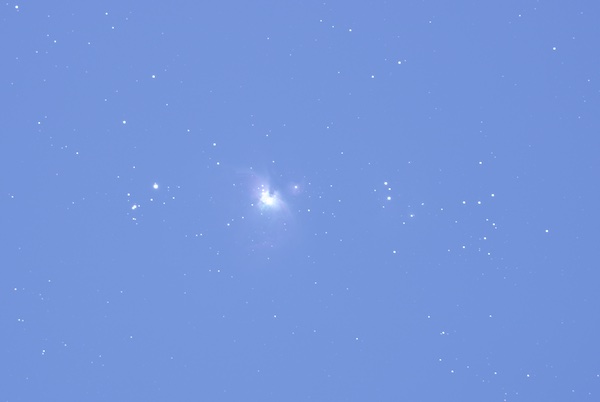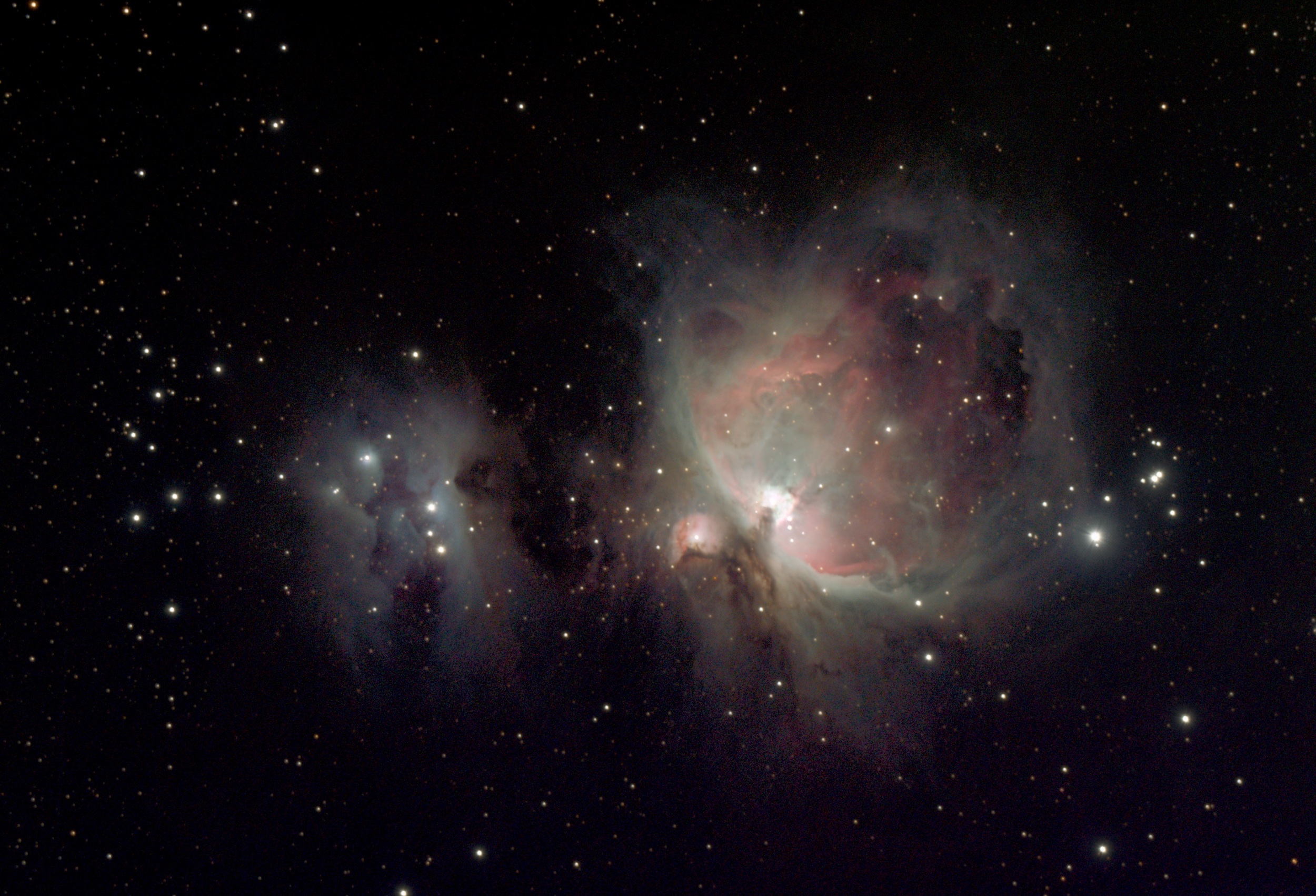Orion Nebula
The Orion Nebula is a roiling dust and gas where thousands of stars are forming, found approximately 1350 light years from us, being the nearest star-forming region to Earth. The bright central region is formed out of four stars that are called the Trapezium because they are arranged in a trapezoid pattern. Located near the Trapezium stars are stars still young enough to have disks of material encircling them. These disks are called protoplanetary disks or “proplyds” and are too small to see clearly in this image. The disks are the building blocks of solar systems. - Credits to NASA.gov website.
The image shown above is made out of only 15 stacked 600 seconds shoots with my Canon 750D unmodified DSLR and with its standard EF-S 75-300mm lens. In a 92% Moon illumination winter night, but right before the Moonrise, I was able to capture 2 and a half hours of data before the night sky got too bright for shooting without special filters. I used only tracking without dithering and acquired the data with the Astroberry on a RaspberryPI 4. I was amazed of being able to shoot 10 minutes exposure with no visible star trailing, being the first time I tried to attempt such a long exposure. I believe that is the reason why I was able to capture the beautiful details o n the outer region of the nebulae.
Shooting 10 minutes exposures is blowing up the centre of the Orion nebulae due to the high luminosity of that region. In order to show the details of the Trapezium, I also used a few 30 seconds exposures captured the same night.

You can also download the full size high resolution image . Download (31 MB)
Extremely happy on the results with an off-the-shelf DSLR and normal lens, however looking forward to acquire a dedicated astrophotography camera and for a night sky without such high illumination Moon.
